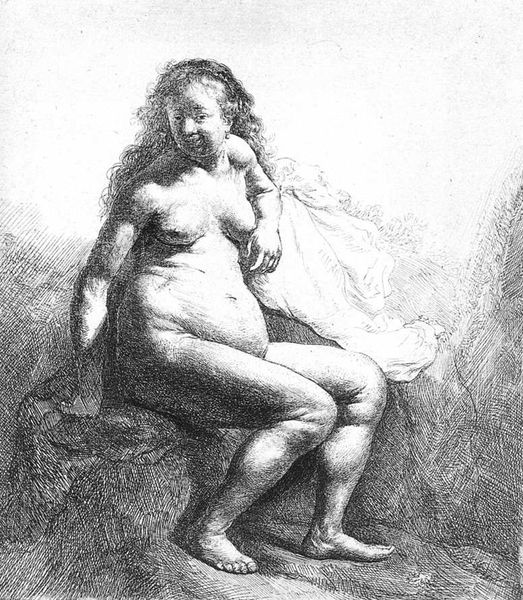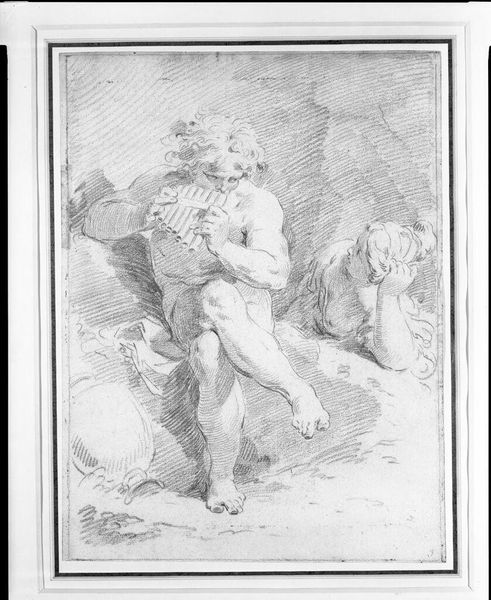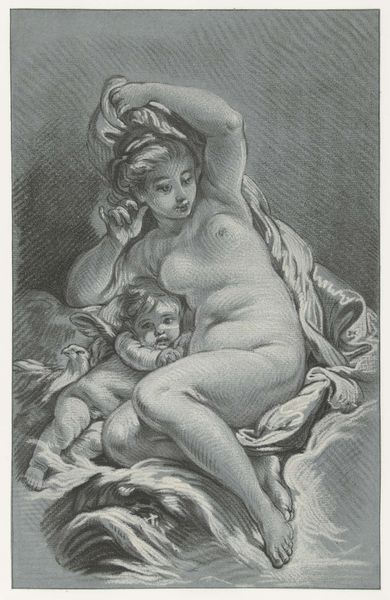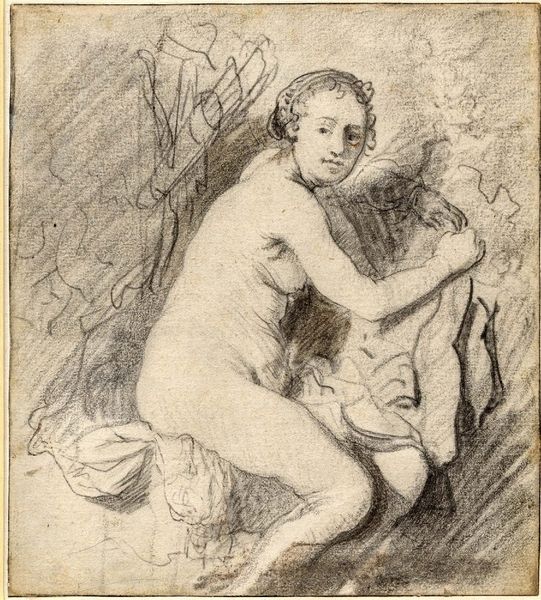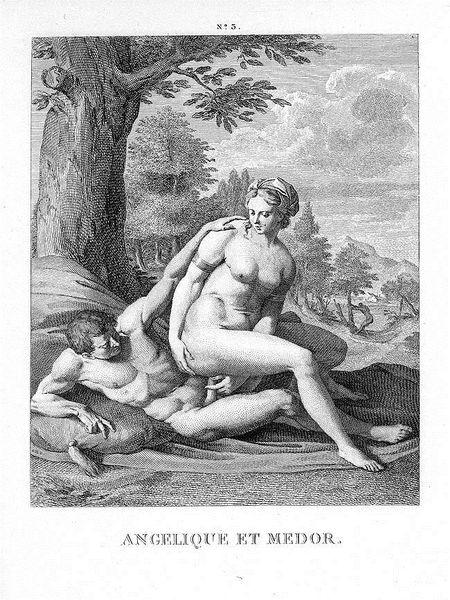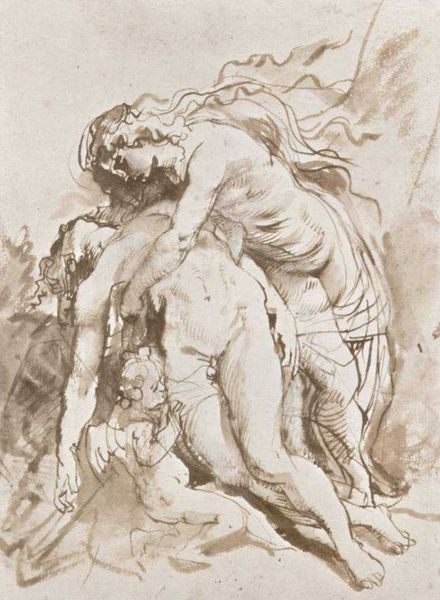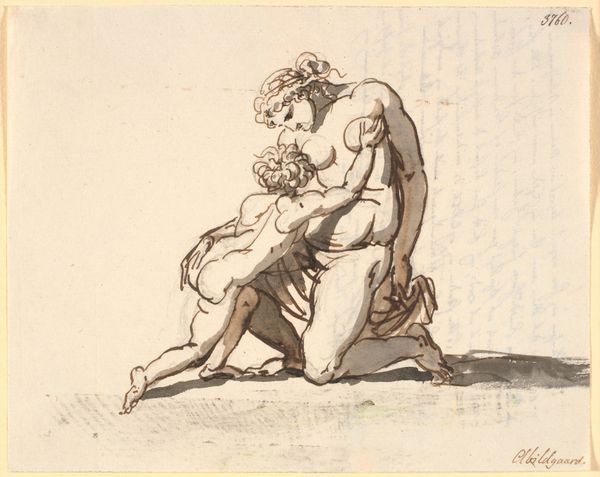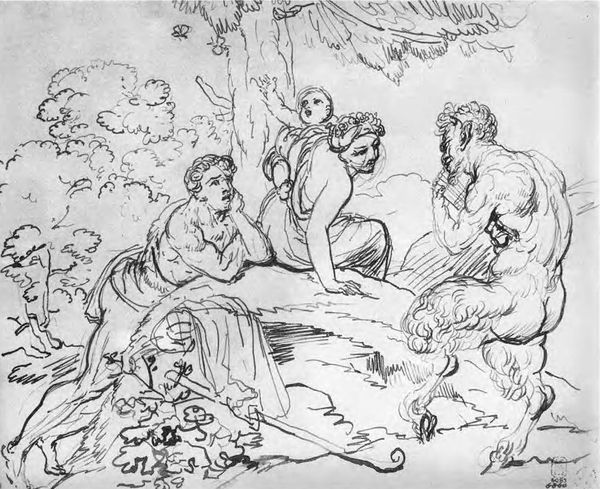
Copyright: Public domain
Curator: This work, rendered in pencil, is entitled "Love the Conqueror," created by Léon Bazile Perrault in 1880. Editor: The figures have an undeniable, sensuous charge, even in this somewhat academic style. A powerful nude woman, down on all fours, bears the weight of a child, an active Cupid aloft holding a floral branch high. Curator: Precisely. Consider the enduring power of Cupid, here acting not so much as a bringer of romance but of possession. In older iconography, the victor’s floral branch might be laurel, so a shift from nobility to a somewhat rougher "love" as natural and unstoppable force. What stories are embedded, would you say, in that posture? Editor: It's suggestive of submission and subjugation, isn't it? Remember, Perrault was working during a time of stark class divisions and moral anxieties in France. The depiction of a woman physically under the ‘conquering’ Cupid plays into existing notions of the time on woman’s place. Perhaps a reminder about societal controls dressed in classical garb? Curator: It can indeed be interpreted within the social and moral framework. Yet, going further, consider it through an exploration of symbolic roles, where the subjugated may well exert its own kind of power, too: isn’t the powerful figure burdened here also? Editor: Absolutely. It is quite a dialectic when you think of how love's triumph often obscures an awful imbalance in power. We romanticize this story still. I'm compelled by how academic drawings served in that capacity: they legitimize such scenarios by portraying it elegantly. Curator: Indeed. What lingers for me is how it echoes, really, within cycles—where perceived power structures often hide codependency or unspoken agreement that has marked humanity’s experience, ever since. Editor: Yes, it does spark contemplation about how these power dynamics played out in 19th-century Europe and the roles art took on that stage. The classical language here offers not just an ideal form but reinforces norms as much as challenging it through mere beauty.
Comments
No comments
Be the first to comment and join the conversation on the ultimate creative platform.
